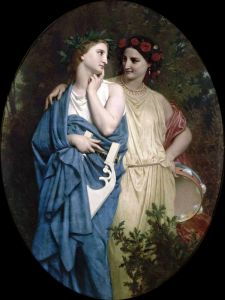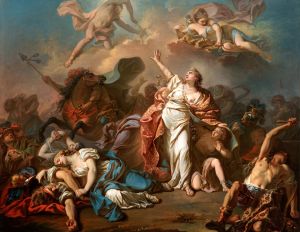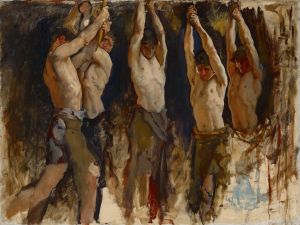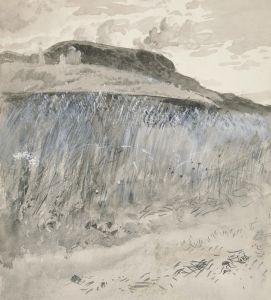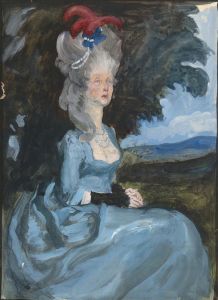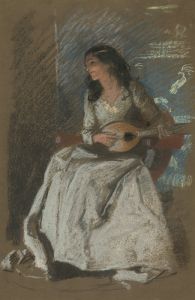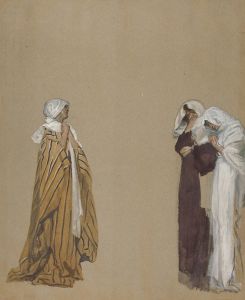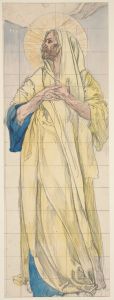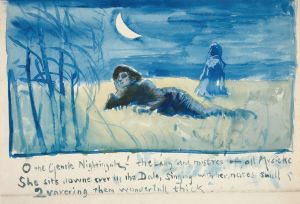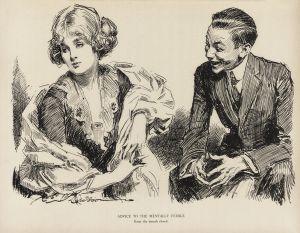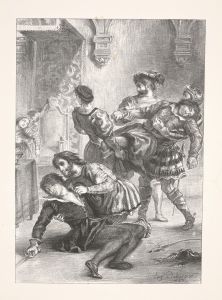
Hamlet; ‘Why look you there! look how it steals away – out at the portal!’ Act III, Scene iv, Hamlet
A hand-painted replica of Edwin Austin Abbey’s masterpiece Hamlet; ‘Why look you there! look how it steals away – out at the portal!’ Act III, Scene iv, Hamlet, meticulously crafted by professional artists to capture the true essence of the original. Each piece is created with museum-quality canvas and rare mineral pigments, carefully painted by experienced artists with delicate brushstrokes and rich, layered colors to perfectly recreate the texture of the original artwork. Unlike machine-printed reproductions, this hand-painted version brings the painting to life, infused with the artist’s emotions and skill in every stroke. Whether for personal collection or home decoration, it instantly elevates the artistic atmosphere of any space.
Edwin Austin Abbey's painting Hamlet; ‘Why look you there! look how it steals away – out at the portal!’ Act III, Scene iv, Hamlet is a notable work of art inspired by William Shakespeare's tragedy Hamlet. Created in 1897, the painting depicts a pivotal moment from Act III, Scene iv, often referred to as the "closet scene," where Prince Hamlet confronts his mother, Queen Gertrude, in her chamber. During this intense exchange, Hamlet sees the ghost of his father, King Hamlet, who appears to remind him of his mission to seek revenge for his murder. However, Gertrude cannot see the ghost, leading her to question Hamlet's sanity.
Abbey, an American artist known for his illustrations and paintings, was deeply influenced by literature, particularly Shakespearean drama. This painting is part of a larger body of work in which Abbey explored themes from Shakespeare's plays. His attention to historical detail and dramatic composition is evident in this piece, as he sought to capture the emotional intensity and psychological complexity of the scene.
The painting portrays Hamlet gesturing toward the ghost, his expression a mix of awe and urgency, while Gertrude looks on with confusion and fear. The ghost, depicted as a spectral figure, is shown retreating through a portal, emphasizing its otherworldly nature. Abbey's use of light and shadow enhances the dramatic tension, with the ghost illuminated in a way that sets it apart from the earthly figures of Hamlet and Gertrude. The composition draws the viewer's eye toward the interaction between Hamlet and the ghost, underscoring the central conflict of the scene.
This work was created during Abbey's time in England, where he spent much of his career. Abbey was associated with the Pre-Raphaelite movement and shared their interest in meticulous detail and historical accuracy. He conducted extensive research to ensure the authenticity of the costumes, setting, and atmosphere in his Shakespearean paintings. The painting reflects Abbey's skill in combining theatricality with a sense of realism, making it a significant contribution to the visual interpretation of Shakespeare's works.
The painting is part of the collection of the Yale University Art Gallery in New Haven, Connecticut. It remains an important example of Abbey's artistic legacy and his dedication to bringing literary scenes to life through visual art.





